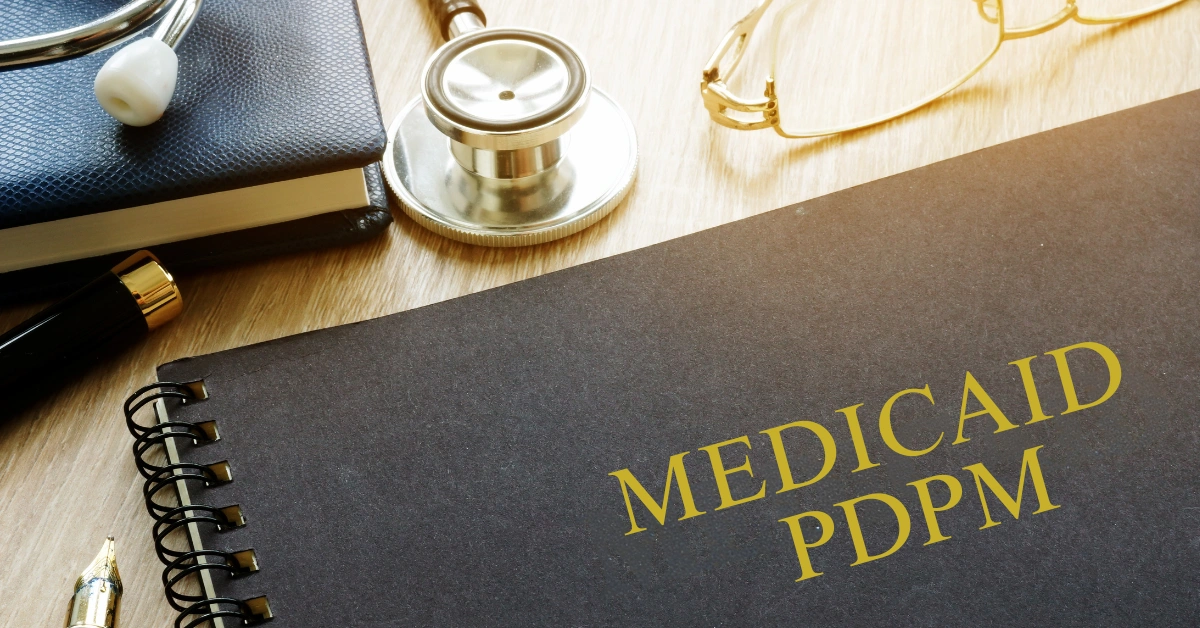Beginning October 1, 2025, many nursing homes will adopt a new reimbursement model for Medicaid residents: the Patient-Driven Payment Model, or Medicaid PDPM. While PDPM has been in place for Medicare since 2019, this is the first time it’s being rolled out more widely for Medicaid across multiple states.
Several states have already transitioned to Medicaid PDPM, with others will follow on October 1, 2025. As this model gains traction nationwide, facilities need to understand what’s changing and how it affects their bottom line.
This shift is more than just a billing update, it represents a significant change in how facilities assess residents, document care, and coordinate interdisciplinary services. For buildings with a large Medicaid population, early preparation is key.
Why Is Medicaid PDPM Happening?
States are moving to PDPM to:
-
- Pay based on the needs and conditions of the resident, not just the number of services provided
- Encourage better documentation and assessment accuracy
- Prioritize quality and value over quantity
The previous RUG system often didn’t reflect a resident’s full clinical picture. PDPM aims to fix that by adjusting payment based on clinical acuity and service needs.
How Medicaid PDPM Differs from Medicare PDPM
While the PDPM structure is similar under both Medicare and Medicaid, each state sets its own rules for Medicaid payment. Some states have already launched their own PDPM models, and those approaches offer insight into how this transition may unfold:
-
- Payment rates and case-mix adjustments are state-specific (i.e., they vary by state)
- Components of PDPM (e.g., nursing, therapy, NTA) may be weighted or calculated differently
- Some states add value-based components tied to quality performance
- MDS coding remains central, but how it affects reimbursement may vary
Facilities must follow their state’s guidance carefully to avoid billing or compliance issues.
Strategies to Prepare for Medicaid PDPM
Here are some steps your facility can take now to get ready:
-
-
Audit and improve MDS coding accuracy – Your MDS is the foundation of PDPM. Inaccurate or incomplete coding will directly affect reimbursement.
-
Strengthen clinical complexity capture – Diagnoses, medications, and special conditions must be properly documented to reflect the resident’s care needs.
- Understand your state’s PDPM rules – Every state’s model will be different. Review your state Medicaid manual, rate sheets, and any Medicaid PDPM crosswalks they provide.
- Support documentation with care notes/progress notes – The data on the MDS should match what’s in the chart. Make sure that all disciplines, from nursing to therapy, are coordinated and working toward the same goal.
- Ensure that there is open communication between your clinical and billing teams – Everyone involved should understand how PDPM affects reimbursement. Cohesion between departments is critical.
- Start preparing now – Don’t wait until October. Begin training, reviewing assessments, and adjusting processes now for a smooth transition.
-
Common Pitfalls to Avoid During Transition
As your facility prepares for Medicaid PDPM, it’s important to avoid these common mistakes that can lead to compliance issues, revenue loss, or team confusion:
-
- Assuming Medicare and Medicaid PDPM are identical – While the structure is similar, state Medicaid PDPM rules differ from Medicare and vary widely. Review your state’s Medicaid manual carefully.
- Lack of coordination between billing and clinical staff – When teams operate in silos, critical details get missed. Make sure your MDS, billing, and finance staff are aligned on PDPM changes and understand how coding decisions affect reimbursement.
- Inaccurate or incomplete diagnosis coding – Diagnosis capture directly affects PDPM classification. Missed comorbidities or vague documentation can lower case-mix scores and reduce payment.
- Overlooking training for non-MDS team members – Nursing, therapy, and even admissions staff play a role in clinical documentation. Ensuring everyone understands their part in accurate MDS completion strengthens outcomes and compliance.
Medicaid PDPM represents a new chapter in long-term care reimbursement – one that rewards clinical accuracy, team alignment, and proactive planning. Facilities that embrace this change will not only maintain compliance but also have the opportunity to enhance care quality and financial performance.
More Resources
